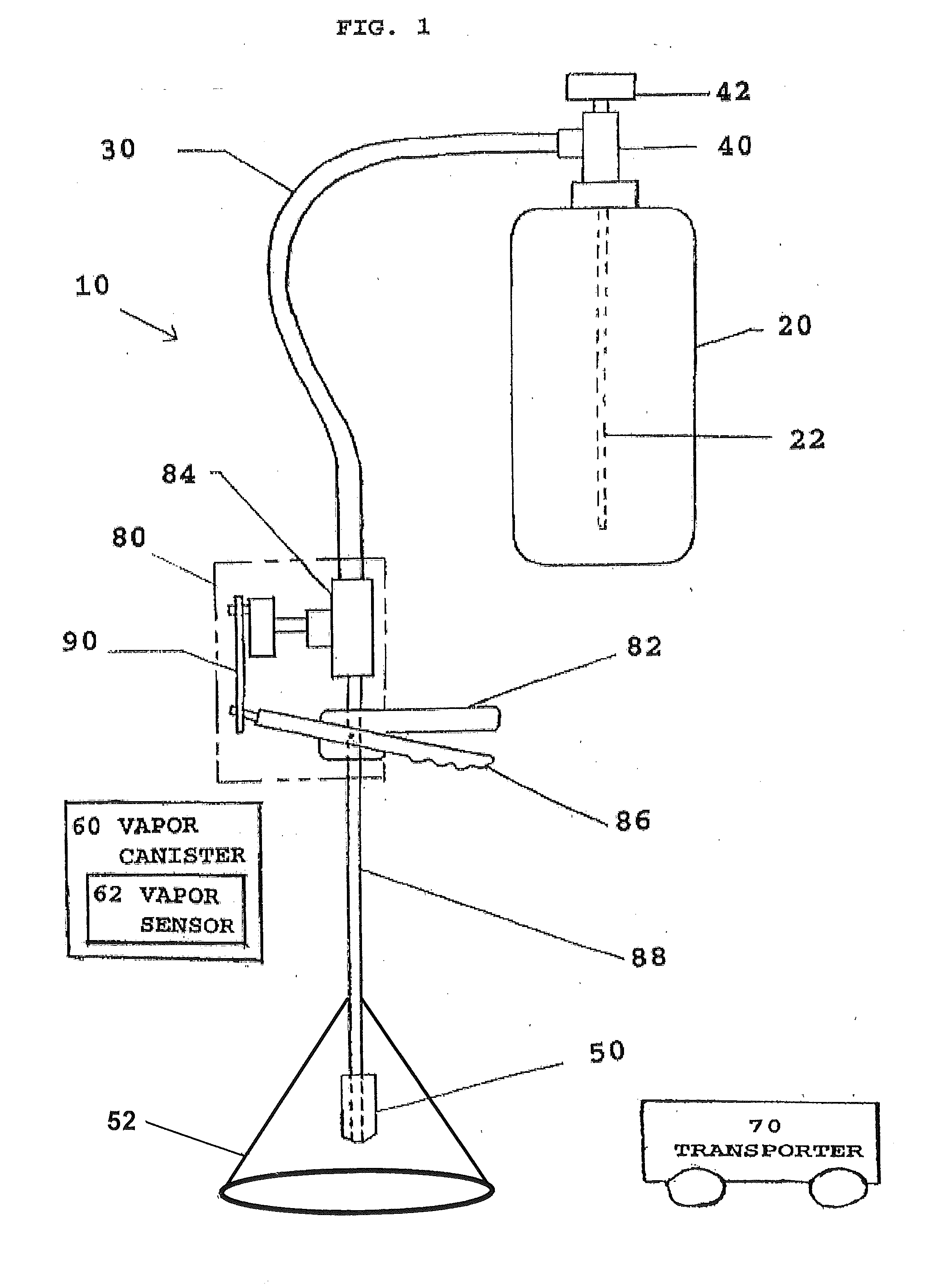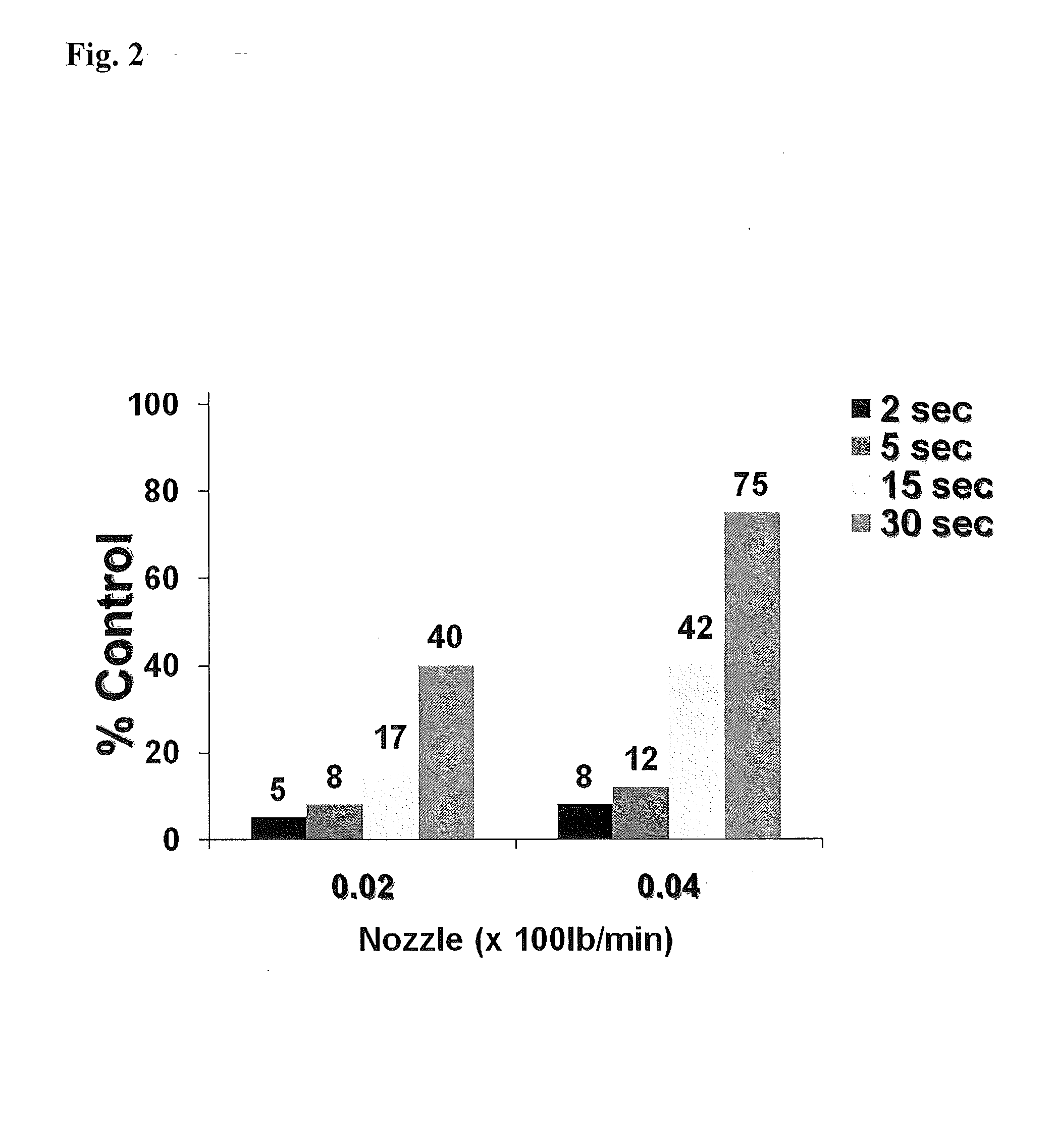Vegetation Treatment
a technology for vegetation and treatment, applied in the direction of thinning machines, weed killers, biocides, etc., can solve the problems of cell death, certain summer grasses to die and certain other summer grasses to become dormant, and achieve the effect of reducing the likelihood of ice crystallization
- Summary
- Abstract
- Description
- Claims
- Application Information
AI Technical Summary
Benefits of technology
Problems solved by technology
Method used
Image
Examples
example 1
[0052]One application of compressed air may be sufficient to stunt or kill certain summer annual grasses and certain summer annual weeds. During one informal experiment, application of compressed air to a patch of crabgrass approximately 1 square foot in size slowed plant growth as soon as 24 hours after treatment. After a period of 48 hours the crabgrass had started to discolor. After 72 hours most of the crabgrass had disappeared while the surrounding Tall Fescue, a cool season grass, remained unchanged. Similar experimental results have been obtained when compressed gas is applied to other unwanted plants in the presence of Fescue. Compressed air applied to Bermudagrass slowed growth after a period of 24 hours. The Bermudagrass appeared dormant after 48 hours. After 72 hours the grass appeared completely dormant. The Bermudagrass did not show signs of re-growth for a period of approximately five days after the initial application of compressed air during extremely hot, humid summ...
example 2
Greenhouse-grown crabgrass plants were treated with the prototype containing either an 8002 flat fan nozzle (which was measured to release 2 pounds of CO2 per minute) or with an 8004 flat fan nozzle (which releases 4 pounds of CO2 per minute), to determine if the rate of application affects the percent control achieved. Control means killing or death of the plants as determined by visual observation. The percent control is a visual rating of the treated plant compared to an untreated control plant. In other words, it is the percent of plant death. Trials were conducted in triplicate.
[0053]As shown in FIG. 2, treatment for 30 seconds with the 2 lb / min nozzle results in 40 percent control, while treatment with the 4 lb / min nozzle for 15 seconds results in 42 percent control; in both cases one pound of CO2 was dispensed. Similarly, treatment for 15 seconds with the 2 lb / min nozzle results in 17 percent control with 0.5 pounds of CO2 dispensed, while treatment with the 4 lb / min nozzle f...
PUM
 Login to View More
Login to View More Abstract
Description
Claims
Application Information
 Login to View More
Login to View More - R&D Engineer
- R&D Manager
- IP Professional
- Industry Leading Data Capabilities
- Powerful AI technology
- Patent DNA Extraction
Browse by: Latest US Patents, China's latest patents, Technical Efficacy Thesaurus, Application Domain, Technology Topic, Popular Technical Reports.
© 2024 PatSnap. All rights reserved.Legal|Privacy policy|Modern Slavery Act Transparency Statement|Sitemap|About US| Contact US: help@patsnap.com










